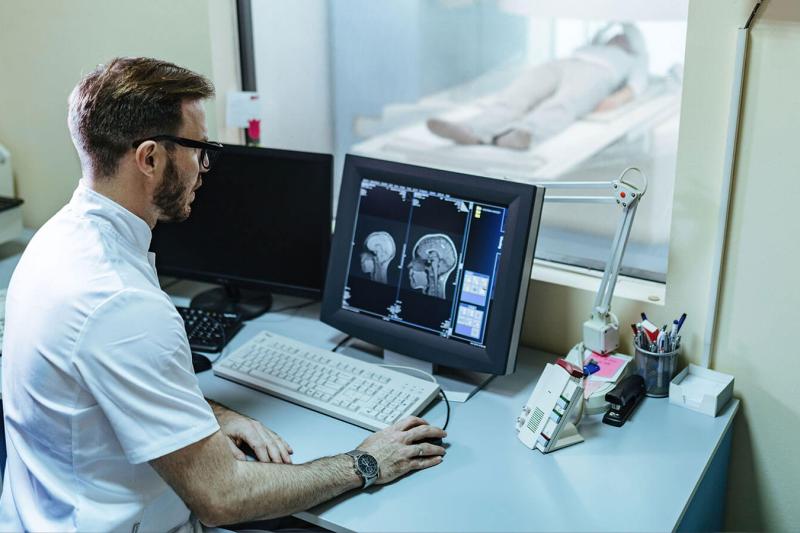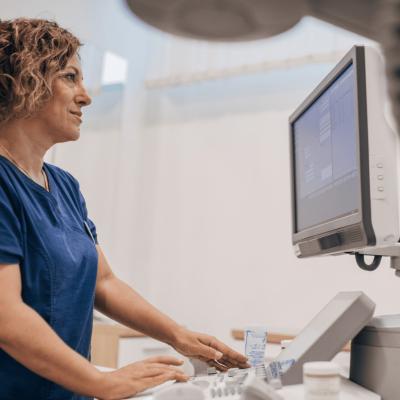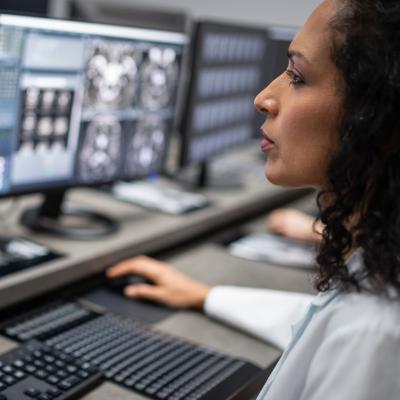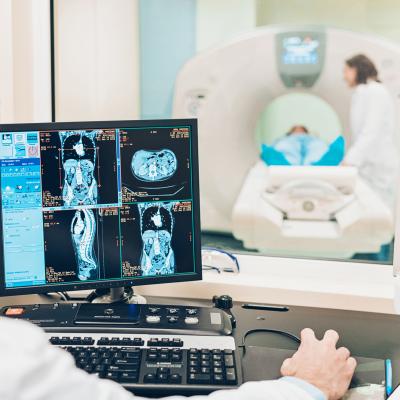- AdventHealth University

Updated Dec. 18, 2025.
In 2023, 41,340 people worked as magnetic resonance imaging (MRI) technologists, according to the Bureau of Labor Statistics (BLS). MRI technologists play an integral role in the field, working with physicians to provide diagnostic care for patients of all ages.
Like any career in the medical field, imaging techs can benefit from furthering their credentials and gaining more experience. Individuals interested in becoming an MRI technologist, such as current ARRT-certified radiologic technologists or NMTCB-certified nuclear medicine technologists, should consider pursuing a Bachelor of Science in Imaging Sciences to advance their careers.
What Do MRI Techs Do?
MRI technologists work in radiology departments and manage the use of magnetic resonance imaging (MRI) scanners, which use radio waves and a strong magnetic field to produce images of a patient’s organs and tissues. MRI scans are used to diagnose patients with tumors, joint pain, cysts, cancer, heart problems and other medical issues.
Key responsibilities for an MRI technologist include:
- Manage patient and personnel safety in the MR environment by identifying potential risks, educating staff and patients on magnetic hazards and following established MRI safety procedures
- Preparing patients for MRI exams by verifying safety clearance, educating patients on the procedure, starting IV lines for contrast media and assisting them onto the MRI table
- Operating complex MRI equipment and adjusting imaging parameters to capture high-quality, diagnostic images
- Administering intravenous contrast media (dyes) when needed to enhance image clarity
- Reviewing images for quality before sending them to a radiologist for interpretation
How Long Does It Take to Become an MRI Tech?
For aspiring professionals interested in entering the field, becoming a certified MRI technologist typically takes about two to four years, while for existing technologists, it can take just one year.
The fastest way to become an MRI tech is by earning a two-year associate degree in radiography. This program provides the foundational knowledge and primary certification needed before progressing into the required MRI-specific clinical and didactic training and passing your MRI board exams.
A four-year bachelor's degree is an excellent option that may offer more opportunities for future advancement. However, the associate degree path is the most direct route into the profession.
4 Steps to Becoming an MRI Tech
Step 1: Fulfill the MRI Tech Education Requirement
Your first step is to earn a degree from an accredited institution. Aspiring technologists can pursue an Associate of Science (A.S.) in Radiography.
Step 2: Earn a Primary Certification
Before you can specialize in MRI, you must first earn a primary certification in another imaging modality. This means passing a credentialing exam from:
- The American Registry of Radiologic Technologists (ARRT) to become a Radiographer (R.T.(R))
- The Nuclear Medicine Technology Certification Board (NMTCB) to become a Nuclear Medicine Technologist (CNMT)
Step 3: Complete MRI-Specific Clinical Training
With your primary certification in hand, you can now specialize. You must complete a structured education program and meet the clinical requirements specific to magnetic resonance imaging.
Step 4: Achieve Your MRI Technologist Certification
The final step is to pass the MRI specialty exam. Earning your MRI technologist certification through the ARRT (for an R.T.(MR) credential) or the American Registry of Magnetic Resonance Imaging Technologists (ARMRIT) validates your expertise and is required by most employers.
MRI Tech Salary and Job Outlook
According to the BLS, the median annual salary for MRI technologists in the U.S. was about $88,000 in 2024. Salaries can vary by experience and location, with those working in outpatient care centers earning a median annual salary of about $128,000.
Since MRI technologists play an important role in the diagnostic process, about 59% work in hospitals; other common workplaces include medical and diagnostic laboratories, outpatient imaging centers and specialist physician offices.
The job outlook for MRI technologists is positive. The BLS projects that the field will grow by 5% between 2024 and 2034, faster than the average growth rate for all occupations.
Pursue a Career as an MRI Technologist
Whether you're just starting or ready to advance, AdventHealth University offers a program tailored to your career goals. For those new to the field, the first step toward a career as an MRI technologist is becoming a certified radiographer. Our Associate of Science in Radiography provides the essential education and clinical training you need to enter the world of diagnostic imaging and build a strong foundation for future specialization.
If you are already a certified technologist, our Bachelor of Science in Imaging Sciences is designed for working professionals, allowing you to deepen your expertise, qualify for leadership roles and increase your earning potential.


